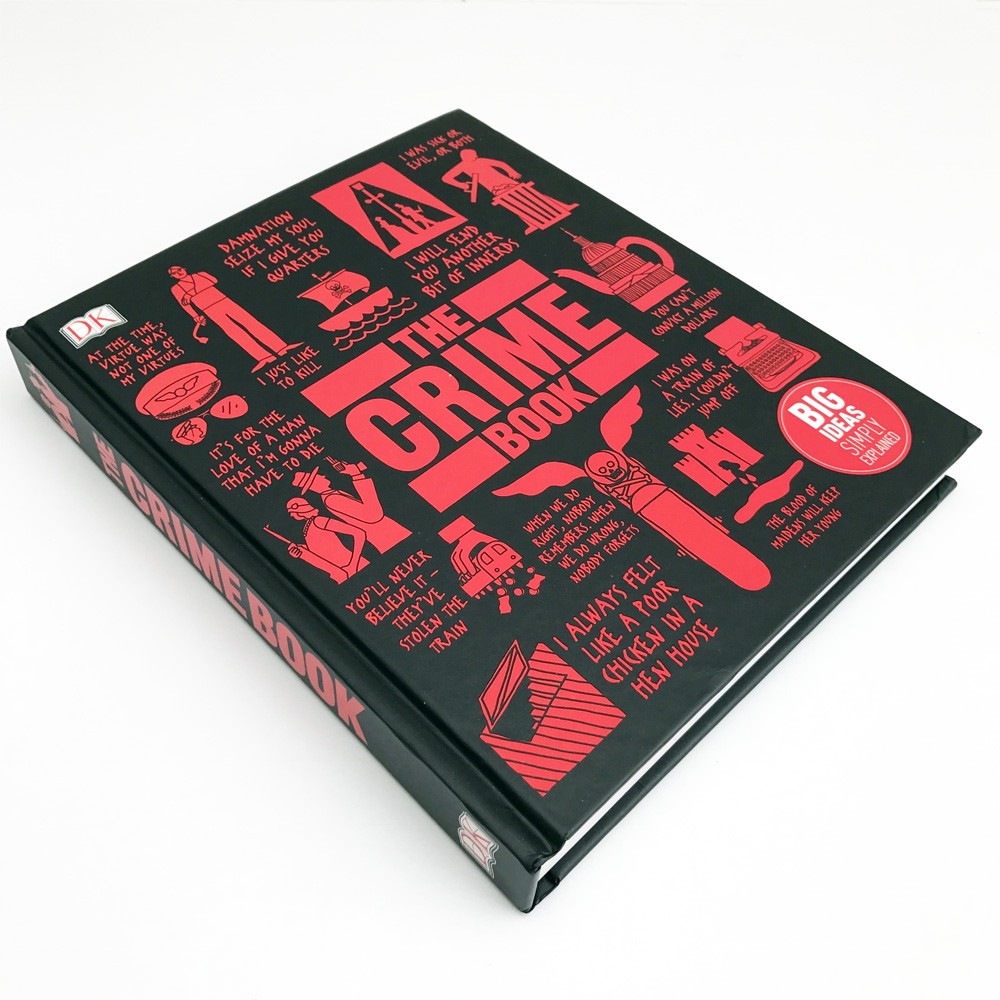 Dorling Kindersley, the company that publishes glorious illustrated reference books, has turned to crime. From 3 April, you’ll be able to get your hands on the latest book in the DK Big Ideas series – The Crime Book. Inside are over 350 pages all about the biggest and most fascinating cases in human history.
Dorling Kindersley, the company that publishes glorious illustrated reference books, has turned to crime. From 3 April, you’ll be able to get your hands on the latest book in the DK Big Ideas series – The Crime Book. Inside are over 350 pages all about the biggest and most fascinating cases in human history.
Organised crime, the wild west, kidnappings, serial killers… you name it, it’s here.
Like other Dorling Kindersley books, the layout is what jumps out at you. It’s more like an informative science magazine than a book, with long form pieces flowing through it, but broken up with boxouts, factoids, illustrations and photography. You can sit down for a long sustained read, or dip in and out as you fancy.
We don’t normally cover true crime, but we think it will make a great gift for anyone who loves crime fiction. It seems a perfect reference tool for authors who need a little inspiration or who want to ground their work with a few facts from the world of true crime.
A crack team of true crime experts helped put it together including Shanna Hogan, Michael Kerrigan, Lee Mellor, Rebecca Morris and Cathy Scott. Crime fiction author Peter James adds the cherry on top with his foreword.
You can pre-order your copy with the button below, and have a browse of some of the book’s features with the images we’ve brought you. (Click on any image to see it larger.)The regular price is £16.99 but you can get it for under £12 from Amazon.
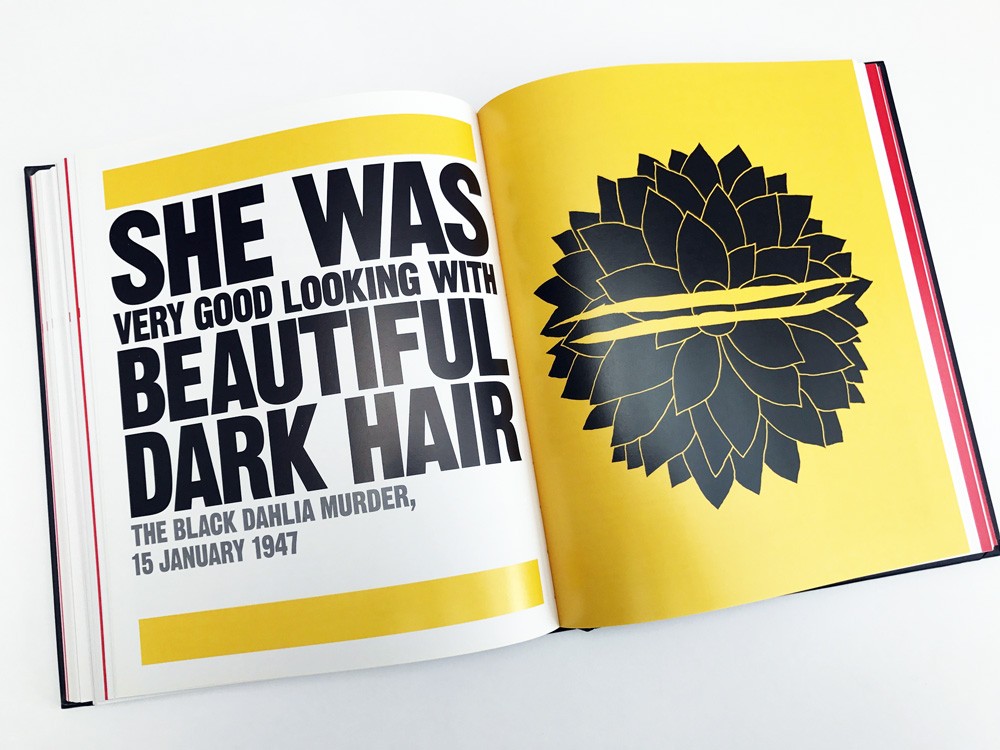
Some of the pieces open with a graphical spread, like this one for the Black Dahlia case, in 1947, which fascinated James Ellroy.
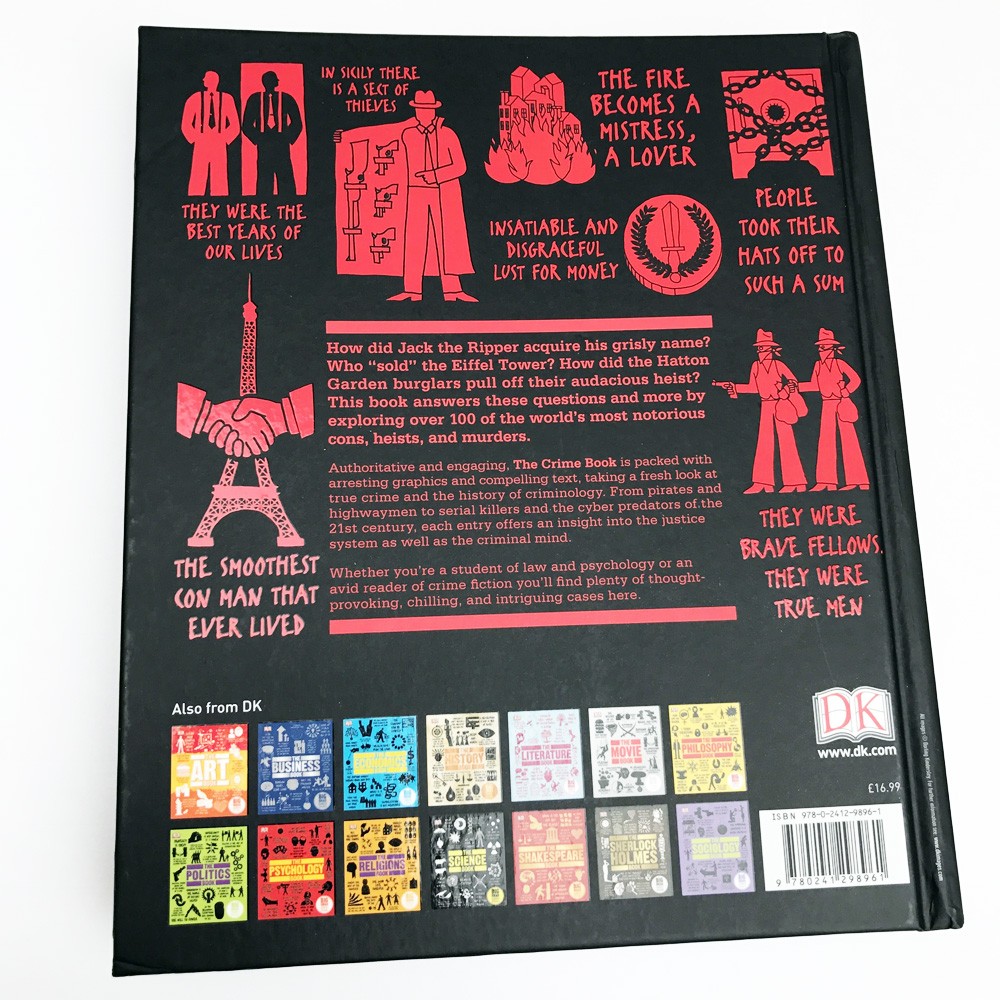
The front and back covers feature illustrations and quotations.
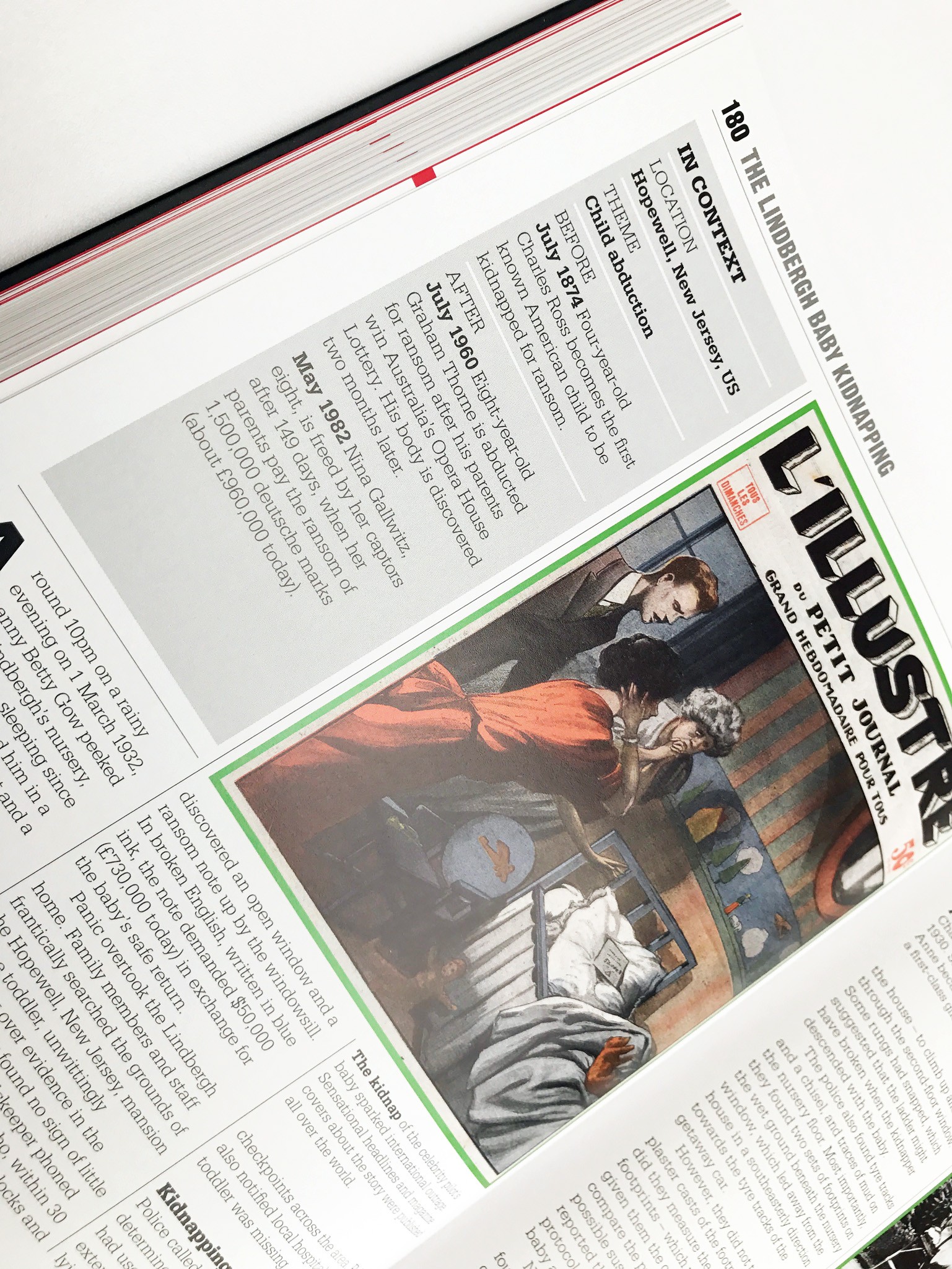
The Lindberg kidnapping is one of the best known crimes in history. The child was never found.

A detail explaining the reach of the yakuza gangs in Japan in the organised crime section, which also features the mafia and Chinese triads.
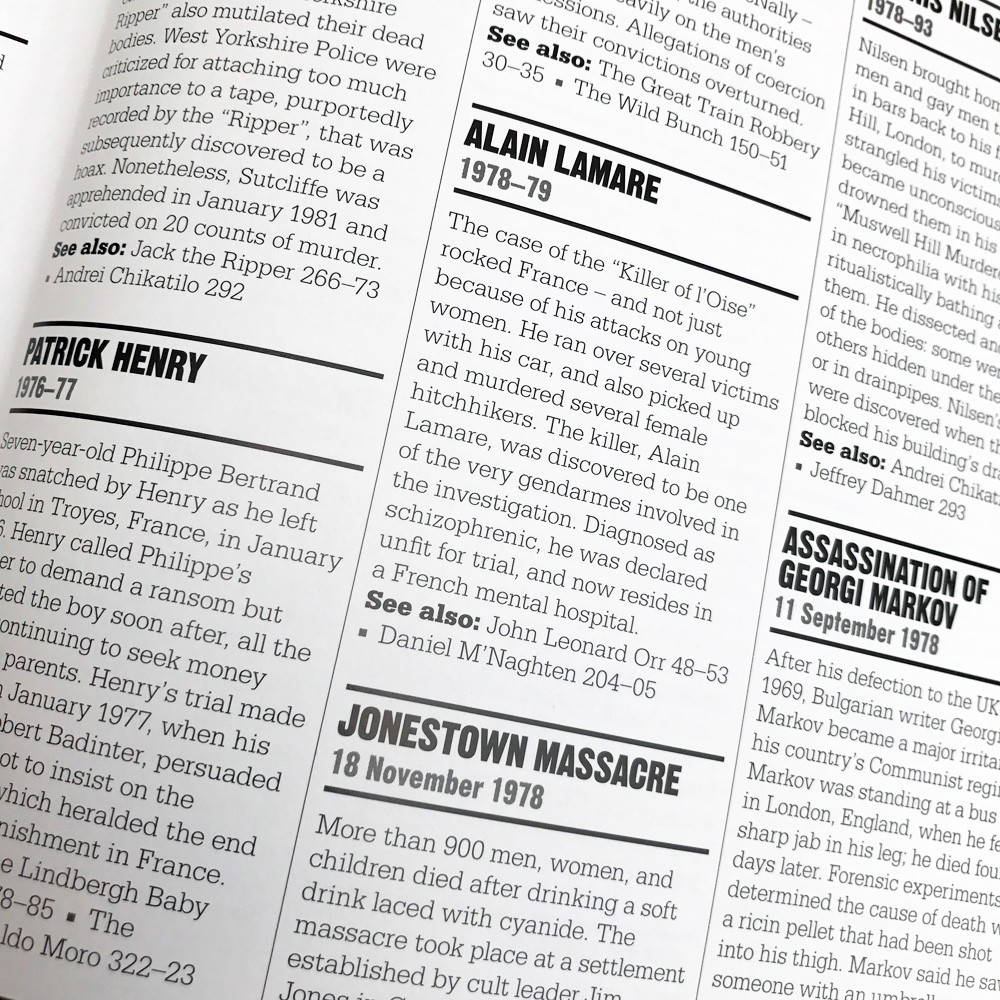
A directory at the back covers a range of incidents chronologically.
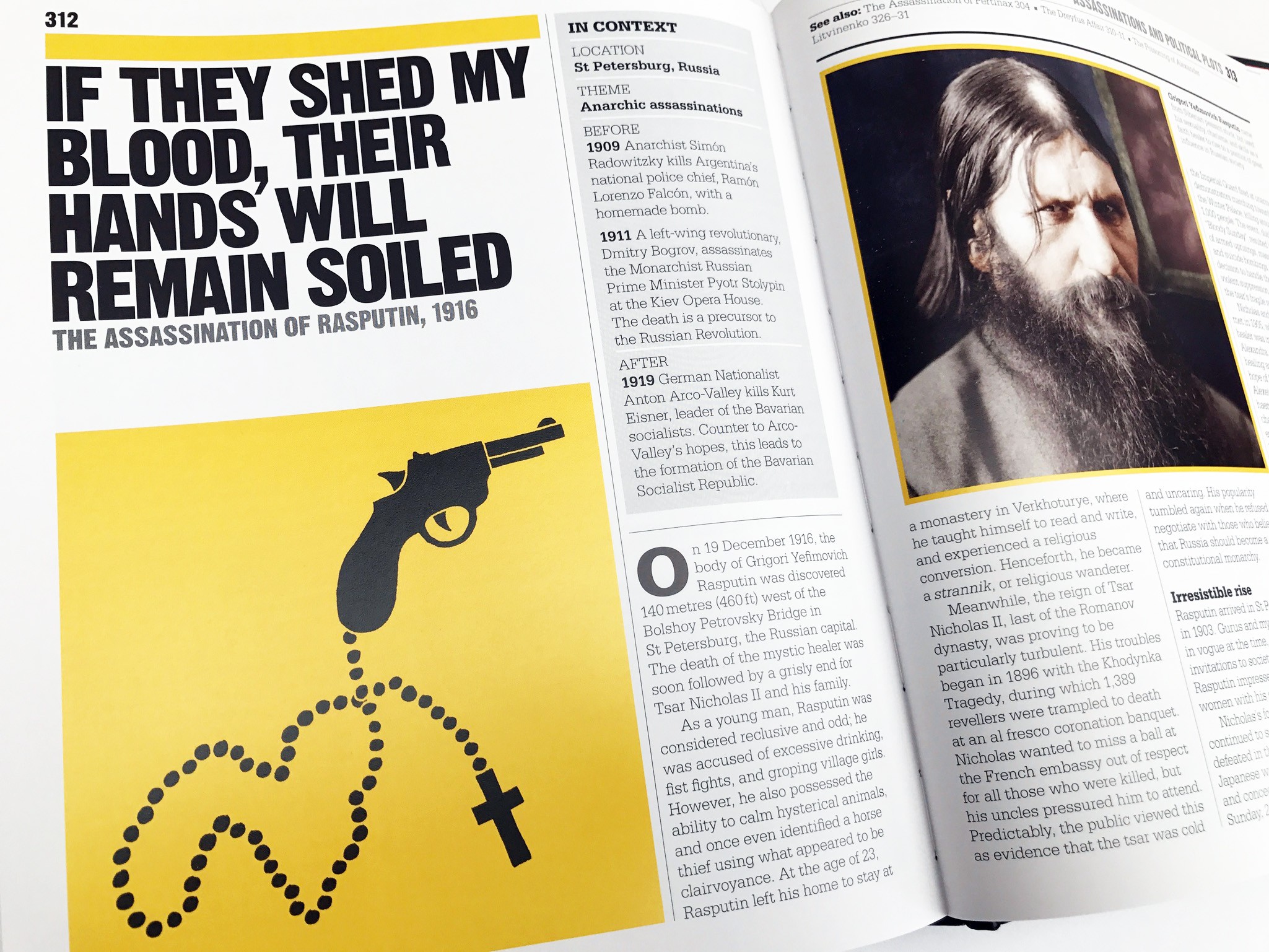
There’s an amazing piece on the assassination of Grigori Rasputin, including an incredible colourised photo of the monk.
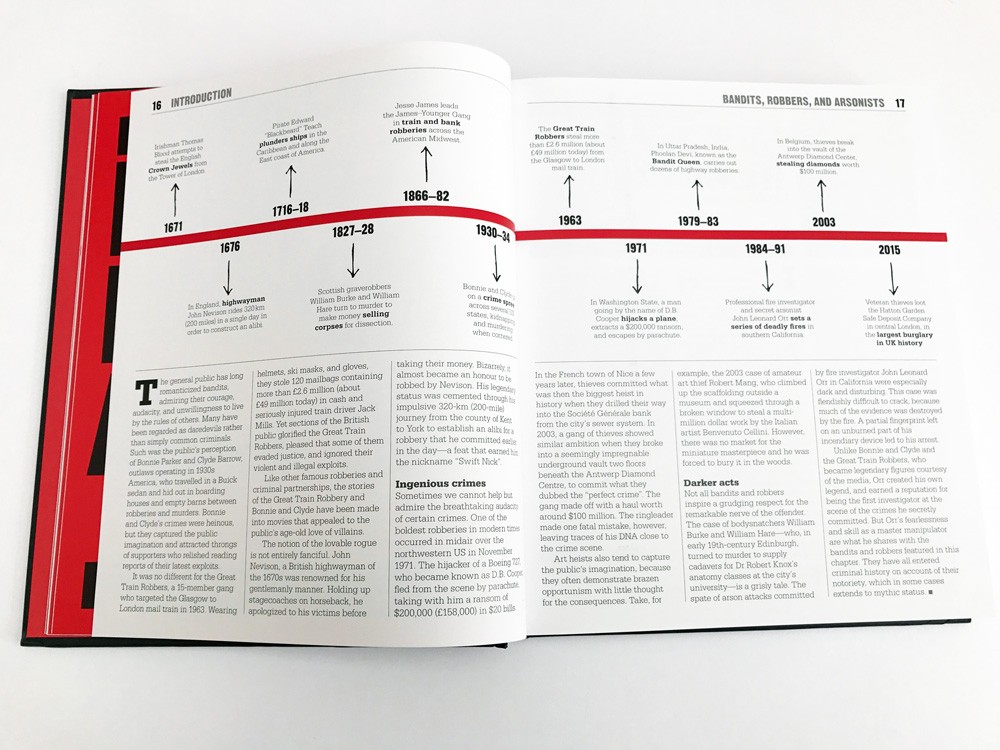
Timelines are another graphic device used in each section of the book.
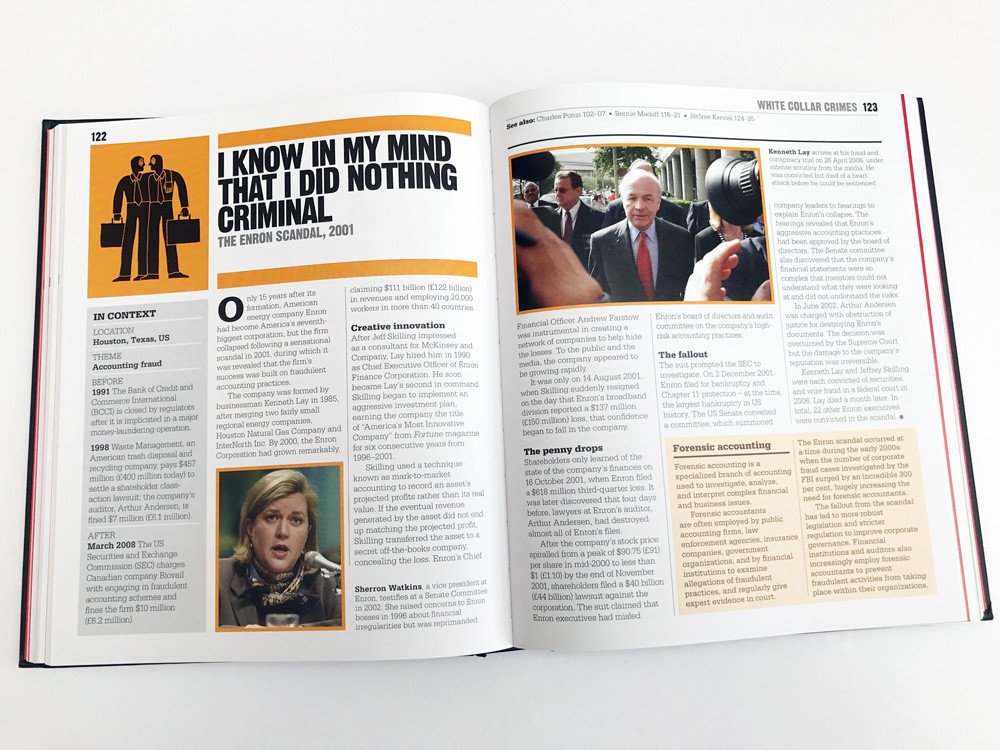
Still denying it – the Enron executives feature in the chapter on white collar crime.








